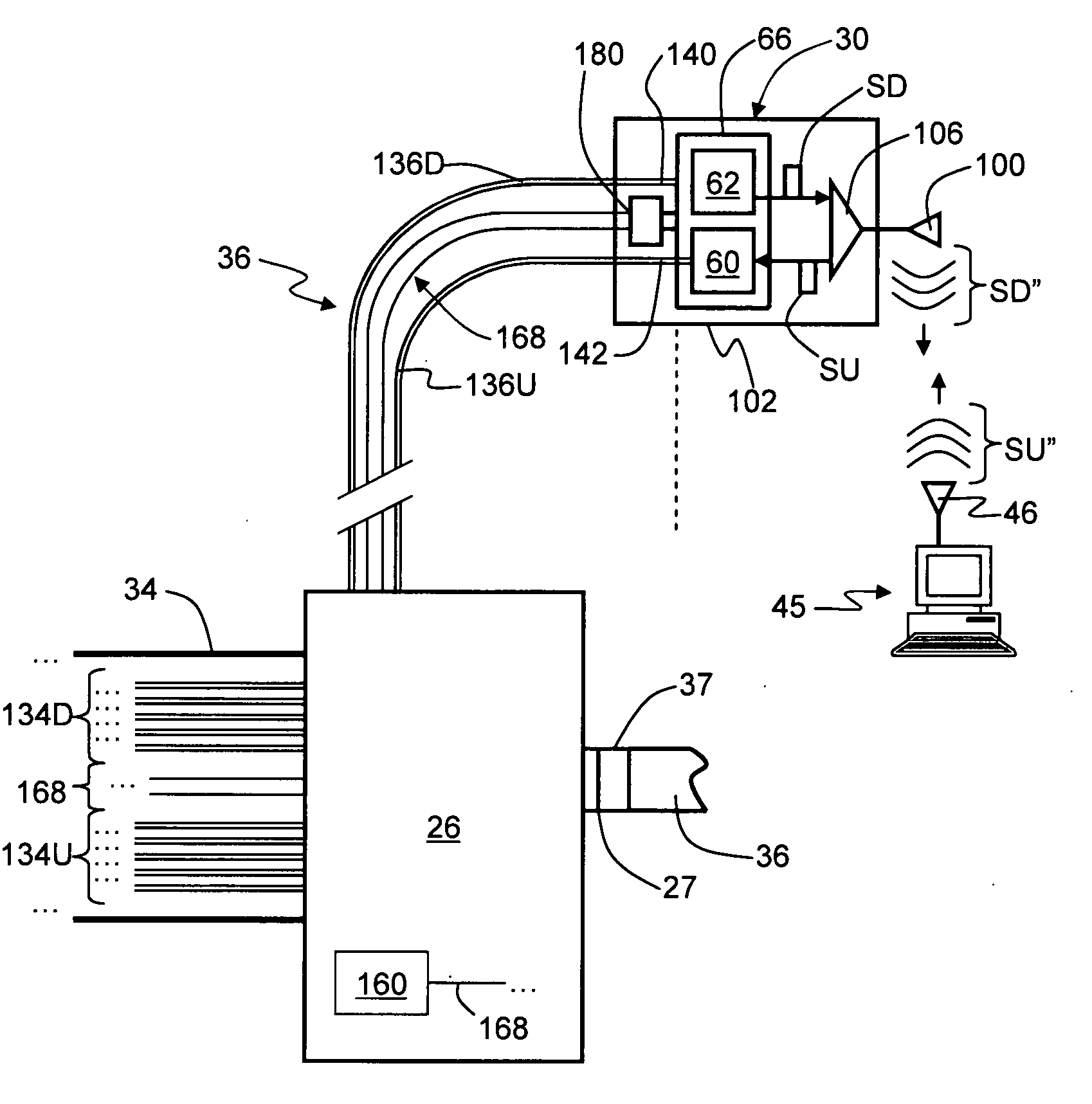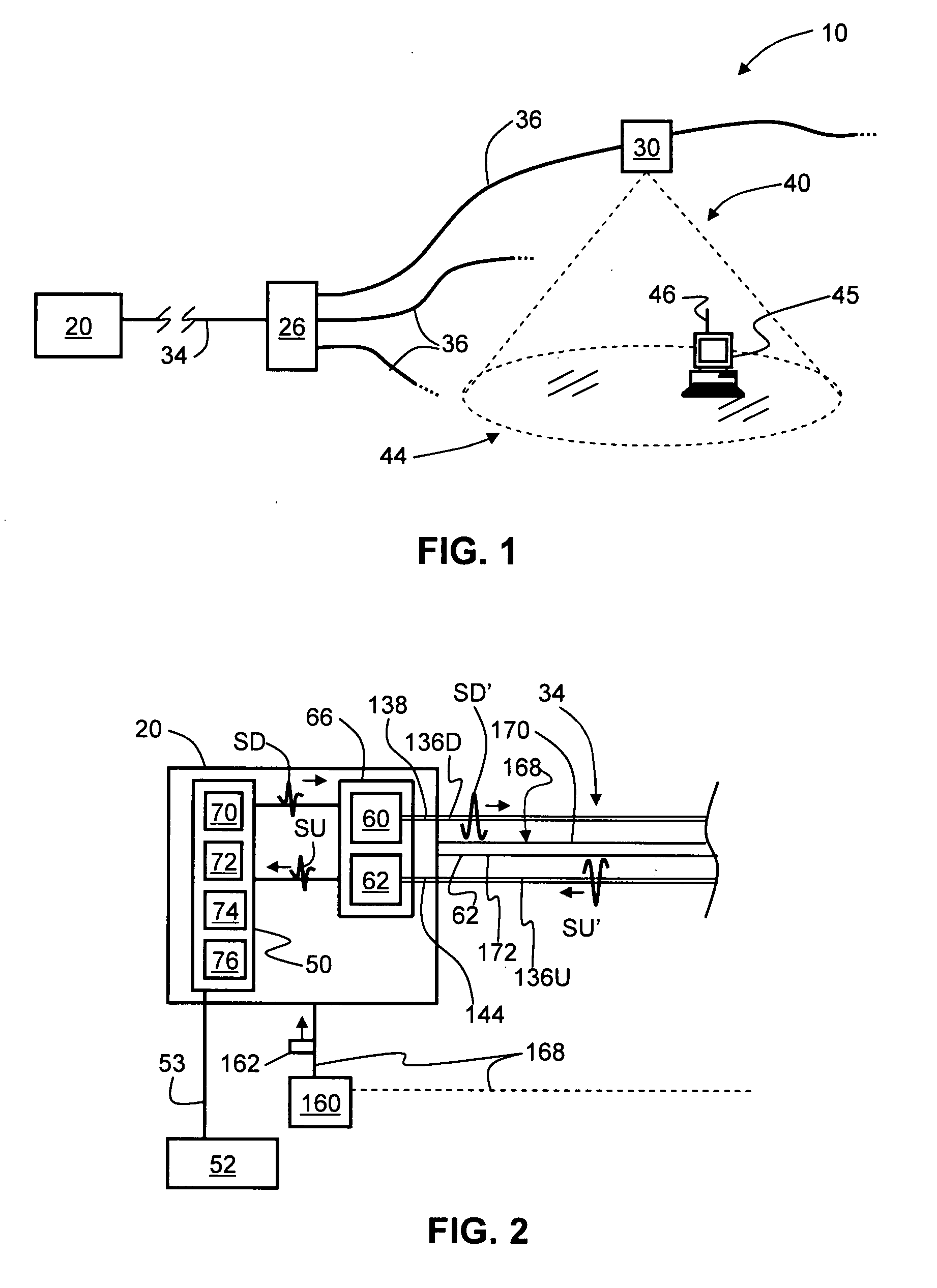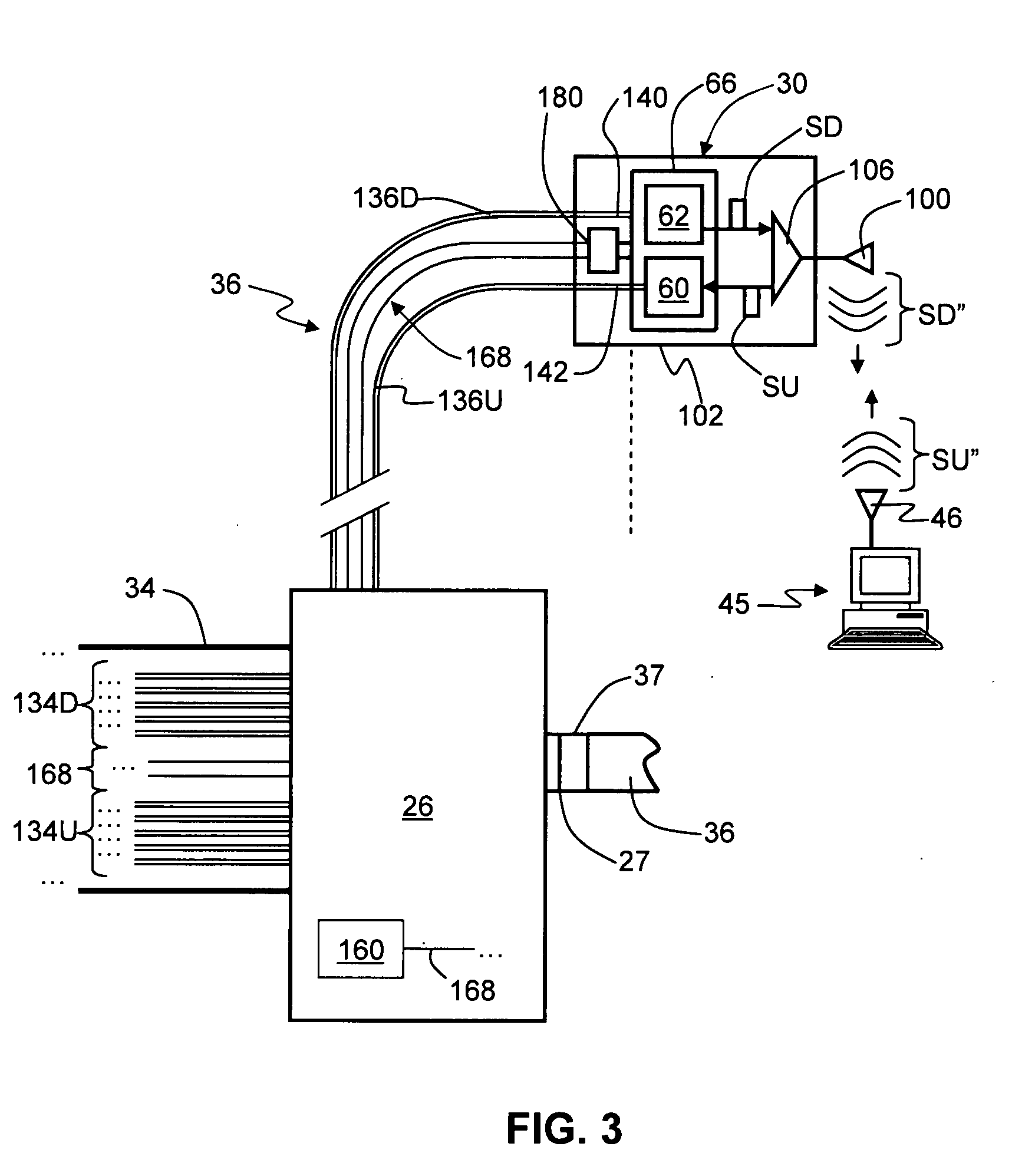Multi-port accumulator for radio-over-fiber (RoF) wireless picocellular systems
a wireless picocellular and multi-port technology, applied in electromagnetic transmission, electrical equipment, transmission, etc., can solve the problems of reducing the service life of the wireless system/network, and affecting the reliability of the wireless system
- Summary
- Abstract
- Description
- Claims
- Application Information
AI Technical Summary
Benefits of technology
Problems solved by technology
Method used
Image
Examples
Embodiment Construction
[0030]Reference is now made in detail to certain embodiments of the invention, examples of which are illustrated in the accompanying drawings. Whenever possible, the same or analogous reference numbers are used throughout the drawings to refer to the same or like parts.
Generalized Optical-Fiber-Based RoF Wireless Picocellular System
[0031]FIG. 1 is a schematic diagram of a generalized example embodiment of an optical-fiber-based RoF wireless picocellular system 10. System 10 includes a head-end unit 20, a distribution unit 26, at least one RoF transponder unit (“transponder”) 30, a primary optical fiber RF communication link 34 that optically couples the head-end unit to the distribution unit, and at least one secondary optical fiber RF communication link 36 that couples one or more transponders to the distribution unit, thus establishing a connection between the transponder(s) and the head-end unit. In an example embodiment, optical fiber RF communication links 34 and 36 include at ...
PUM
 Login to View More
Login to View More Abstract
Description
Claims
Application Information
 Login to View More
Login to View More - R&D
- Intellectual Property
- Life Sciences
- Materials
- Tech Scout
- Unparalleled Data Quality
- Higher Quality Content
- 60% Fewer Hallucinations
Browse by: Latest US Patents, China's latest patents, Technical Efficacy Thesaurus, Application Domain, Technology Topic, Popular Technical Reports.
© 2025 PatSnap. All rights reserved.Legal|Privacy policy|Modern Slavery Act Transparency Statement|Sitemap|About US| Contact US: help@patsnap.com



